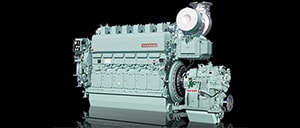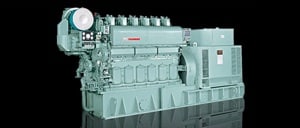Drastically reduced CO2 emissions
Highly evaluated comfort in indoor environment
The head office building, where Yanmar has gathered world-class environmental technologies, received the highest of rank S in the CASBEE Osaka Mirai *, which evaluates the environmental performance of buildings. In addition to energy and resource-saving technologies, the comfort of the indoor environment is highly evaluated. The actual value of CO2 emissions of the area in fiscal year 2018 was 54.0 kg-CO2 / m2 year. The value marks -61.7% compared to a typical building. We confirmed a legitimate effect on CO2 reduction.
* A system that comprehensively evaluates the environmental performance of buildings. In addition to environmental considerations such as energy and resource savings, and recycling, evaluations are also based on considerations such as the comfort of the indoor environment, building life cycle, and protection for the landscape.



































![Head office area CO2 emissions [kg-CO2 / ㎡ year]](/ltc/global/about/technology/img/vision1/zeb/a32e4c69a2/result_img.png)




